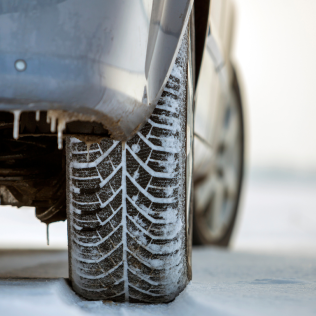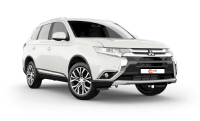Winter in New Zealand transforms the landscape into a whimsical scene, where frosted peaks and snow-dusted roads beckon adventurers to embark on thrilling journeys. However, driving requires careful preparation.
Renting the right car ensures a safe experience. Choose a vehicle suited to local conditions to fully enjoy your adventure, whether navigating urban streets or traversing alpine routes.
Choosing the Right Rental Car
New Zealand winters can throw all sorts of unpredictable weather scenarios, choosing the right rental car is essential, ensuring your journey through New Zealand is both safe and enjoyable.
When selecting a vehicle, consider the specific terrain you’ll encounter; a compact car may be ideal for bustling city roads, while a robust four-wheel drive or SUV could be imperative for more demanding alpine landscapes. Different regions present varied challenges, from icy mountain paths to congested urban streets, requiring a thoughtful approach based on your itinerary. By tailoring your vehicle choice to the local environment, you not only enhance your comfort but also ensure safety.
Specifically, small cars excel in tight, winding city streets or narrow mountain passes, offering agility and ease. For rural adventures with icy roads, a four-wheel-drive vehicle provides enhanced traction and stability. This adaptability ensures you’re prepared regardless of the journey’s demands. If you are planning a long journey, a fuel efficient vehicle could also keep road costs down as well as providing safe passage.
Moreover, carefully considering these aspects not only increases your assurance but also heightens the joy of exploring New Zealand’s diverse scenery. Whether you’re winding through the majestic Southern Alps or navigating the vibrant streets of Auckland, the right rental car will elevate your experience. Always consider specific needs such as the number of passengers,
luggage capacity, and the expected weather conditions. These thoughtful choices will ultimately transform your travel into a seamless, unforgettable adventure.
Understanding New Zealand’s Winter Roads
New Zealand’s winter roads demand careful consideration.
Winter conditions across the country vary significantly, with some areas experiencing frequent snow, ice, and rain. Roadway conditions can shift rapidly, offering distinct challenges depending on your travel region. Mountaintop vistas may captivate drivers, yet they require vigilance and preparation, especially where narrow roadways wind through steep alpine passes or coastal routes.
Keep tire chains and snow chains handy during South Island travel and be aware of black ice. Black ice can be found in areas of New Zealand where temperatures reach sub-freezing levels, such as Otago or the Southland. It is highly slippery and must be avoided whenever possible. It is difficult to spot, and forms after light rain or by rivers and lakes
While major roads are generally well-maintained, any winter excursion requires vigilance and an understanding that adverse travel conditions can arise – from unpredictable snowfalls transforming landscapes into icy wonderlands – to high winds sweeping through exposed mountain roads.
For those exporing the marlborough sounds region, depending on how far you go, you may encounter kilometres of unsealed dirt roads. For practical dirt road driving, consider vehicles with 4-wheel drive, good ground clearance, and robust suspension.
Equipped with this understanding, setting out in New Zealand tests one’s adaptability against unpredictable winter climates, ultimately enriching the driving journey. By preparing for potential weather changes, checking vehicle readiness, and planning your trip to accommodate unforeseen delays or detours, you can fully embrace the exhilarating experience of exploring New Zealand’s winter wonderland. Reference the New Zealand transport agency for Road updates https://www.nzta.govt.nz/
Driving in Alpine Regions
Navigating the alpine regions of New Zealand presents a truly remarkable driving experience that marries awe-inspiring landscapes with challenges.
In these areas, drivers can encounter fickle weather patterns, with the possibility of robust snow showers giving way to sunshine in minutes. Thus, preparedness becomes pivotal; having tire chains, understanding local advisories, and adjusting travel speed can make a significant difference.
Embrace “preparedness” and “caution” as indispensable mantras to maximise the ‘mountain driving’ thrill while exploring the picturesque landscapes of Aotearoa.
Opting for a Small Car
Navigating New Zealand’s alpine roads requires precision—a small car offers the maneuverability needed for winding paths and tight corners.
New Zealand’s alpine roads stretch over 5,000 kilometers, requiring agile handling and careful navigation.
When traveling through regions like Queenstown and Wanaka, a small car is your ally, making it easier to respond to the varying weather conditions you’ll encounter during winter journeys.
Compact vehicles provide not just ease and convenience—choosing a smaller car over larger alternatives significantly reduces energy consumption, ensuring an eco-friendly approach to your winter adventure.
Benefits for Mountain Driving
Driving through New Zealand’s majestic mountains offers an exhilarating experience with picturesque views that refresh the soul.
Mountain driving provides unprecedented access to hidden trails and scenic overlooks.
With well-maintained roads leading through these rugged terrains, adventurers will find a tapestry of nature’s wonders.
It is important to choose the right vehicle for your itinery. Some of our mountain roads can be windy and narrow. Make sure you opt for a vehicle that you are confident in driving.
Consider a 4-wheel drive or SUV for better traction and handling on challenging terrains and potentially snowy conditions.
Handling Icy Conditions
When driving in icy conditions, remember to adjust your speed, keep a safe distance, and avoid sudden maneuvers.
These conditions can be unpredictable, so it’s crucial to remain vigilant and calm. If confronted with black ice, ease off the accelerator, keep the steering wheel steady, and avoid aggressive
braking to maintain control of the vehicle. Always check the weather forecast and plan your route accordingly.
Peeling away the complexity, driving in snow requires patience and anticipation, focusing on the ‘slow and steady’ mantra, and when necessary, using snow chains for added traction.
Advantages of Four-Wheel Drive
Four-wheel drive vehicles provide drivers with enhanced stability and control on New Zealand’s diverse terrains and winter roads.
When navigating the rugged landscapes of alpine regions, a four-wheel drive offers increased traction, making it easier to handle snowy and icy conditions. This capability can be a lifesaver when facing steep inclines or unpredictable weather patterns often encountered in such environments. With power distributed to all four wheels, these vehicles effectively manage slippery surfaces, reducing the risk of getting stuck.
Moreover, four-wheel drive is a great option for those exploring the road less traveled. On backcountry adventures, drivers will appreciate how these vehicles tackle dirt paths and unpaved routes, enhancing the overall driving experience and boosting confidence on journeys beyond the beaten path.
Safety Tips for Snowy Roads
Driving on snowy roads requires heightened awareness and preparedness to ensure your safety and that of your passengers.
1. Check Weather Conditions: Before starting your journey, review weather forecasts and road conditions to anticipate any potential challenges.
2. Equip Your Vehicle: Ensure your rental car has the necessary equipment like snow chains and emergency supplies, including blankets and food.
3. Drive Slowly: Reducing speed is crucial in snowy conditions, allowing you more time to react and brake safely.
4. Maintain Distance: Increase your following distance to account for longer stopping distances on icy surfaces.
5. Stay Focused: Eliminate distractions and stay attentive to sudden changes in road conditions or unexpected obstacles.
6. Avoid Sudden Movements: Gradually accelerate and decelerate to maintain traction and
7. Using the four-second rule .If it’s wet or icy then increase your following distance to four seconds. As well as giving you more room to stop, it also improves your view of the road ahead, giving you more time to react.
Always maintain composure and adjust your driving style to the road conditions, ensuring a safe journey.
Prioritise caution and remain vigilant, allowing ample time to reach your destination without rushing.
City Driving Considerations
Navigating New Zealand’s vibrant cities like Auckland, Wellington, and Christchurch requires understanding traffic patterns and local road rules. Opt for an automatic vehicle to ease the transition to left-hand driving and manage city traffic with greater ease.
Keep an eye out for shared roads used by bicycles and pedestrians, integral to city infrastructure, and drive with patience.
Why Choose an Automatic Car
Simpler and more intuitive to operate.
Automatic cars remove the need to manually switch gears, which can be especially beneficial for those new to left-hand traffic, as found in New Zealand. The lack of a clutch pedal lets you focus on the road entirely, avoiding distractions from urban driving complexity. Moreover, it makes driving less stressful, enabling you to enjoy more of the stunning landscapes and vibrant cityscapes that New Zealand has to offer.
The ease of operating an automatic allows greater concentration.
This is particularly crucial, considering that city driving in Auckland, Wellington, or Christchurch inherently demands extra attention. These cities are bustling with diverse traffic scenarios that change rapidly; therefore, operating an automatic car can reduce cognitive load.
Embracing automatic transmission not only enhances comfort but can also serve as a safety net. According to recent observations, there is a growing preference towards automatic vehicles as of 2023, marking them as the preferred choice of newcomers to New Zealand. This trend reflects an increasing awareness of the advantages that automatic rentals bestow upon international visitors exploring unfamiliar territory.
Navigating Urban Areas
Navigating urban centers in New Zealand requires heightened awareness and careful planning due to dynamic traffic patterns and unique road layouts.
1. Plan Your Route: Utilise GPS or mapping apps to avoid busy routes during peak hours.
2. Understand Parking Options: Familiarise yourself with parking facilities and regulations to avoid fines.
3. Adopt Defensive Driving: Stay alert and maintain safe distances, as urban traffic can be unpredictable.
Choosing automatic vehicles simplifies driving, assisting you in tackling city streets with greater ease.
Enhancing focus amidst bustling cityscapes allows for a more enjoyable and stress-free driving experience in urban New Zealand.
Factors to Consider Before Booking
Choosing the ideal winter car rental in New Zealand requires careful consideration of your journey’s specific demands, such as terrain, weather conditions, and personal driving experience, to ensure safety and comfort.
Assess whether you’ll traverse mountainous areas or urban regions, as this will influence the vehicle type best suited to your needs.
Understanding License Requirements
When considering a winter car rental in New Zealand, it’s crucial to comprehend the license requirements you must meet.
For international visitors, holding an Overseas or International Driving Permit (IDP) is a fundamental necessity. This document provides a seamless understanding of global driving standards, ensuring you are legally able to traverse New Zealand’s scenic landscapes with ease.
If your license is not in English, it is essential to carry an accurate translation or an IDP. This requirement facilitates clear communication with local authorities, enhancing your driving experience across the majestic terrains of this picturesque nation.
For those utilising a New Zealand driver’s license, make sure it’s valid and not expired. Rental companies typically mandate possession of a full, unrestricted license for at least 12 months, thereby demonstrating your competency and assuring safety on the roads.
Such meticulous preparation will arm you with confidence, encouraging a gratifying and secure driving adventure across New Zealand’s breathtaking vistas.
Let us take care of the details so you can focus on the magnificent journey ahead. Contact us for help with bookings https://www.ezicarrental.co.nz/contact-us/

